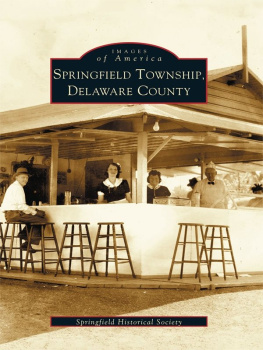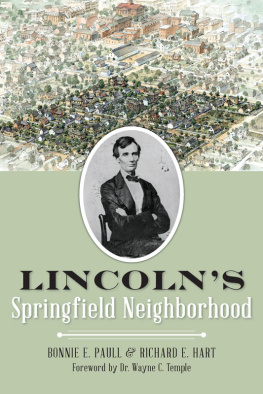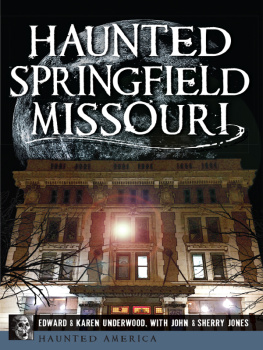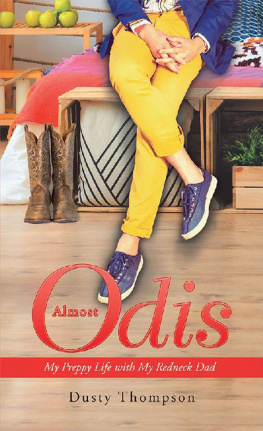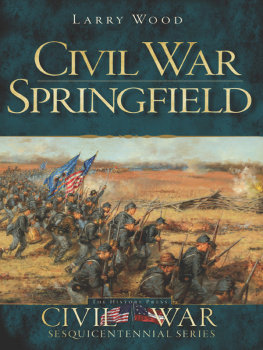A GIRL CALLED
DUSTY
This is dedicated to Dusty Springfield
May she now rest in peace

First published in Great Britain in 2008 by
Andr Deutsch
an imprint of the
Carlton Publishing Group
20 Mortimer Street
London W1T 3JW
Text copyright Sharon Davis 2008
Design Copyright Carlton Publishing Group 2008
The right of Sharon Davis to be identified as the author of this work has been asserted by her in accordance with the Copyright, Designs and Patents Act 1998.
All rights reserved. This book is sold subject to the condition that it may not be reproduced, stored in a retrieval system or transmitted in any form or by any means, electronic, mechanical, photocopying, recording or otherwise without the Publishers prior consent.
A CIP catalogue record for this book is available from the British Library
ISBN 978-1-78012-012-6
eISBN 978-1-78012-014-0
The publishers would like to thank the following sources for their kind
permission to reproduce the pictures in this book.
Page 1: (top) Private Collection; (bottom) Popperfoto/Getty Images
Page 2: (both) Michael Ochs Archive/Getty Images
Page 3: (both) Dezo Hoffmann/Rex Features
Page 4: (top) Dezo Hoffmann/Rex Features; (bottom) King Collection/Retna Pictures Ltd
Page 5: (top) Dezo Hoffmann/Rex Features; (bottom) David Redfern/Redferns Music Picture Library
Page 6: (top) BBC Photo Library/Redferns Music Picture Library; (bottom)
Terry ONeill/Getty Images
Page 7: Michael Putland/Retna Pictures Ltd
Page 8: (both) Private Collection
Every effort has been made to acknowledge correctly and contact the source and/or copyright holder of each picture and Carlton Books Limited apologises for any unintentional errors or omissions, which will be corrected in future editions of this book.
Introduction
I owe much to Dusty. Not only did I follow her lead by backcombing my hair and plonking black spit mascara on my eyelids, but with her encouragement I ventured into the then unknown world of black music which led me to Motown Records. There was then no turning back. I also became an active member of her fan club in East Sussex and entertained many fan club members in my parents house in Uckfield. Being part of the club meant I got to see Dusty easily, so I met her at all her shows in my area, and at the occasional performance in London. The Drury Lane concert in April 1979 was the last.
While I collected Motown material over the years, I also hoarded Dusty memorabilia and this formed the background to this book, which has been on the back-burner for far too long. And heres how it came about. Mine was the last interview of the day and the hotel manager wanted to reclaim the conference room Dusty had used all day for interviews. So off we trotted to her hotel room and, as we walked along the corridor, I said Id love to write her life story and would she mind? Or, more importantly, would she help? Ive got tunnel vision just now and as theres much of my life I cant remember, I wouldnt be much help with the details. I wont stop you writing about me. In fact, she smiled, Id like to read what youve got to say. So be kind. That was during the nineties. Sadly, Dustys not here to read it. We chatted for hours; I got my interview for Blues & Soul, and much of what wasnt used is printed here for the first time. One of her biggest moments was being featured in the magazine and she said, Itll be quite an achievement. Im hardly a soul singer, or a blues singer if it comes to that, but its interesting to finally get there.
Several uncanny things happened during the year I wrote this book. Whenever I turned on the radio a Dusty song was being, or was about to be played. In a restaurant the background music would always include one of her greatest hits compilations. And my lovely great nephew Oliver James Eagle was born on her birthday, 16 April.
One thing Ive noticed since Dustys death is how regularly her music is featured on television programmes. One-off dramas, sitcoms and soaps like Coronation Street and Emmerdale, and in particular Eastenders, play her music on a regular basis. For instance, when the screen character Pat Butcher (played by Pam St Clements) was grieving for her recently deceased screen husband, she hugged the album cover of Dustys Greatest Hits while I Just Dont Know What To Do With Myself played in the background. And Im sure this use of her music will continue for years to come because she was so much a part of the British way of life.
This book would not have been possible without the dedication of certain wonderful people. And my heartfelt thanks, with love and hugs, to Gerry Constable who kept the project together under less than perfect working conditions. To Pat Rhodes, whom Ive known since we had small beehive hairstyles, for believing in me and inviting me into her friends world. To Carole Gibson and Paul Howes who travelled with me on this journey, unravelling my muddled thoughts and astounding me with their knowledge. To Martha Reeves, my lifelong friend, for her huge contribution to black music and unwavering loyalty to Dusty. To Lorna and Gib Hancock for sharing their precious memories. And to Simon Bell for his support, not only now but in the past. You all gave your time and knowledge so freely that its an honour to include you here.
However, thats not all. Other people generously gave their time Leon Shaier (such wonderful stories he shared); William Naylor (and his treasure trove of multi-coloured press clippings); Vicki Wickham (for her honesty); Daryl Easlea (for the splendid music); Dave Randle (for his assistance in sorting out the musicians); Jayne Jolliffe and Vivian Copeland (for help with the food and fauna); Norman Scott, Julie Rough and Maria Williams; Mike Gilbert, Tony Leong and Dustys fans who contacted me to wish me well and offer help with pictures and memories.
Finally, to Dave Godin, who died in 2004. He had founded the first Tamla Motown Fan Club in Britain, of which Dusty was a member, and was a forerunner in promoting Motown music in this country. Among his many talents he was a journalist, ran his own record store in London, spearheaded his own record label and quickly earned the title of a black music historian. He was also my dearest friend and mentor. Months before his death he wrote an essay about Dusty and gave it to me for safekeeping in the knowledge that I would one day write my book. It is published for the first time on page xi.
Last, but by no means least, my sincere thanks to my agent John Pawsey and to Rod Green, my editor, and the gang at Deutsch Publishing.
I hope Ive done her proud.
Sharon Davis
2008
Essay
T he trouble with history is that when you live through it, it is now, and it is only after it has been distanced by time that you see it against a broader backdrop. I mention this because reflecting on Dusty Springfield today, I get all sorts of thoughts and perspectives which perhaps would not have occurred to me when she was at the height of her stardom. For not only was Dusty a vocalist and personality that people loved and admired, she was also a cultural icon in much the same way as Jean Harlow, Jane Russell, Rita Hayworth or Marilyn Monroe. Of course, her stature didnt perhaps equal the heights achieved by some of those but her image and persona, like theirs, fulfilled a deep cultural need.
Collectively, we seem to crave access to certain images and icons at any given time, and these vary according to our needs, fashions, and the collective mind-set of the times. Dusty managed to become much more than just a vocalist who made hit records, she was an image, too, and one that harmonized with the spirit of the sixties and seventies. She was both the girl-next-door and the extraordinarily glamorous girl-next-door who was bound to go places. She carried a degree of femininity that was so strongly etched that it seemed quite right and natural that her appeal should brim over to respond to the charms of both sexes.



